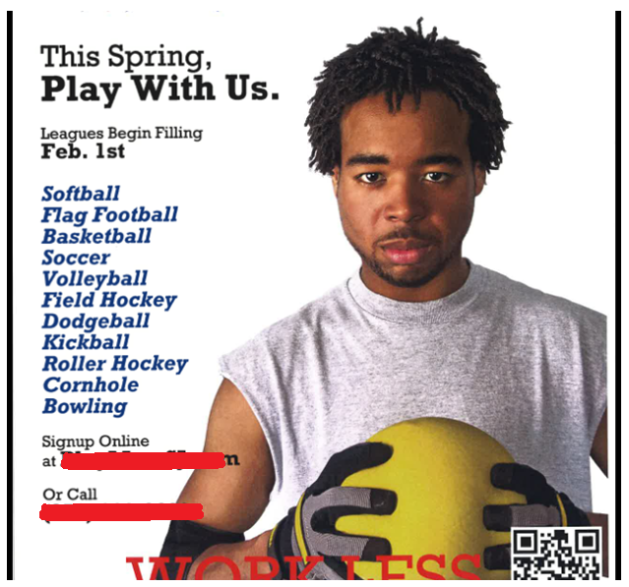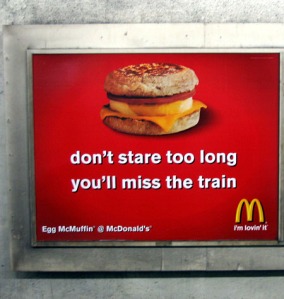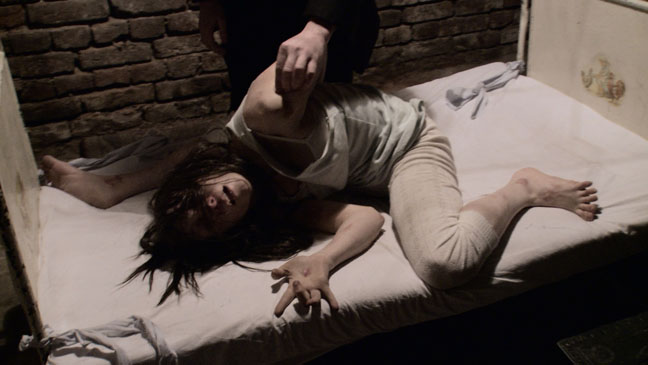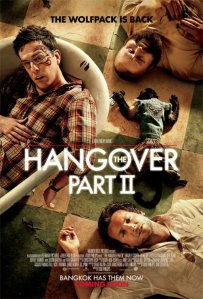Disconnected: A Photo Essay explores the relationship between hands, shoes, and our personal identities.
Reflection 1: On the Choice of Camera and Photographs
There were a number of possibilities for the camera that I could use in this project. Should I use a disposable camera in order to reflect the idea that we treat our hands as disposable objects, ready to be used and then discarded until future use? Should I manipulate the images with filters and cropping to draw attention to specific moments?
After careful consideration, I chose a digital camera, a Sony Cybershot DSC-W530. There’s nothing inherently special about this camera: the features are for the ease of amateur photographers, not intending for the user to be overwhelmed by possibilities. This camera best suited my needs in a couple ways.
First, a digital camera captured the texture and detail of the hands and shoes. The lines, wrinkles and age spots wouldn’t appear on a disposable camera the same way they would on a digital camera. The shadows in the mesh or fabric of shoes were brightened and intensified by using the digital camera.
More detail, the kind a more advanced camera captures, would have greatly enhanced the focus I was trying to portray. However, in weighing my options, I chose instead to capture natural images of people who were comfortable with being photographed. Even with a simple camera, when I first began taking pictures, I got a series of questions signaling their discomfort, especially those I didn’t know. What did I want them to do with their hands? What was the purpose? How many people were going to see? These first photos felt staged and awkward because the subjects were so uncomfortable. They didn’t show the natural dichotomy between hands and shoes that I was looking for.
Using a digital camera also allowed me to “sneak” some pictures. Digital cameras don’t draw attention to themselves the same way professional cameras do: nearly everyone owns a digital camera in this technological age, even if it’s the one built into their phones. If I had a digital camera out, looking at the screen, others did not spare a second glance. To counteract some of the nervousness of the subjects, I could take the photos of their hands first and inform them after, showing them the pictures and asking their permission to use them in the essay.
In this technique I captured a series of photos from various subjects. I carried a camera with me everywhere I went, always on the lookout for interesting activities. I photographed many people in order to have a wide variety of tasks to show in the essay. The more I photographed, the more I became aware of the best light, the best angle. For example, in one photograph, the subject wanted to light a cigarette. If I looked at his hands from behind, where he was shielding the lighter, his hand was dark and difficult to see. From the front, the flame became a central focus, illuminating both the lines on his hands and the scene around him.
After taking the images, I edited all of the photos in Picasa. This relatively simple editor allowed me to adjust the images of hands by adding a soft focus, blurring the background so that the viewer paid attention to the detail of the hands in action. I cropped each photo meticulously until each was aesthetically pleasing to the eye. In some photos, I also adjusted the saturation and the shadows in order to draw out more details that the camera couldn’t capture on its own. The photo of a woman holding up a stethoscope, for example, became more appealing through adding more shadows: all of the unique shadows in her hands were also heightened.
I chose the images in this photo essay not only for their aesthetic qualities, the ones that simply were the most intriguing after I edited them, but also for the way that the hands and the shoes spoke to each other. How did the hands of a girl in slicing cheese in a deli slicer, equipped with hot pink nail polish, relate to her purple shoes? How did hands flipping through a magazine relate to black leather boots, only half-laced?
These images told a story in themselves, of an identity trying to assert itself no matter what task the hands were meant to do. The photos in the essay were chosen for their particular dynamic between hands and shoes, when the relationship was clear or when it called the relationship into question. Juxtaposing the images with each other, and then with the words that the person used to describe themselves, brought the relationship between all three elements to the forefront. Together, they crafted the identity of these twelve individuals.
Reflection 2: Composition and Rhetorical Theories of a Single Image
This photograph of a butcher cutting meat has been one of my favorites from the beginning, but it was not until I considered the theories of photography that I discovered why.
It is first aesthetically pleasing because it follows several key theories of photographic composition. The Digital Photography School advocates the use of various textures for a more appealing quality. Here, the contrast of the smooth, reflective knife blade contrasts with the rough lines of the hands, calling the lack of clarity in the hands themselves into question. Knives, with one purpose, are clear. Hands, with many, are worn down.
We are drawn to the knife because of its difference to the r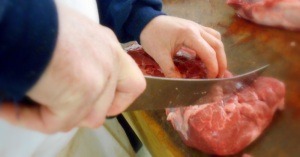 est of the photograph. The knife, in turn, becomes a leading line. As Photography Mad outlines, leading lines guide the viewer toward the subject and through the photograph. Here, the curve of the knife blade directs the reader from one hand to the other, drawing importance to both actions. The viewer sees how the subject holds the blade, with purpose and skill. The way he holds the meat on the other end of the blade also speaks to his professionalism, drawing attention to the way the hands seem to act all on their own.
est of the photograph. The knife, in turn, becomes a leading line. As Photography Mad outlines, leading lines guide the viewer toward the subject and through the photograph. Here, the curve of the knife blade directs the reader from one hand to the other, drawing importance to both actions. The viewer sees how the subject holds the blade, with purpose and skill. The way he holds the meat on the other end of the blade also speaks to his professionalism, drawing attention to the way the hands seem to act all on their own.
And where is the person behind those hands? By cropping the subject out of the image, I emphasize how the importance of hands has been lost. Photography Mad explains that the need for cropping arises when “the main subject is so small it becomes lost among the clutter of its surroundings.” If the photo included a whole person cutting the meat, the viewer would focus on elements that more truly told the story, like his body language or his facial expression. Not one glance toward the hands, but the whole picture of a person and his story. In cropping, I narrowed the vision of the reader away from this man’s life.
In addition, the knife symbolizes power. As Sean Hall, in This Means This, This Means That, explains, through a symbol, the “meaning that is created is related to the nature of the object” (32). Those who wield knives have control over those that do not. The butcher has control over that piece of meat, over the way it is sliced and the way someone else will receive it. The focus of this image seems to reflect this amount of power. If we follow the knife, we are brought to the hands that guide it.
Yet there is nothing inherently powerful about this image. Errol Morris, in his book Believing is Seeing, argues that photographs do not make any arguments for themselves. The arguments come from the ways that the viewer interprets the images: “Images are plastic, malleable, and lend themselves to any and every argument” (217). They become a testament to the way that the viewer wants to see them. We want to believe that the hands wield this power.
What is the truth behind this photograph? Is the butcher empowered by his occupation? Or is he stuck in a dead-end job, where his hands complete tasks mechanically and with no gratification?
I influenced this perception for the viewer by only showing the hands in a moment of power. Morris believes that “the minute you select one photograph from a group of photographs, you are doing something very, very similar to manipulating reality” (164). Here I only showed the deft movements and precise methods, but not the attitude or the emotion. I created a powerful man by only showing this moment of power.




